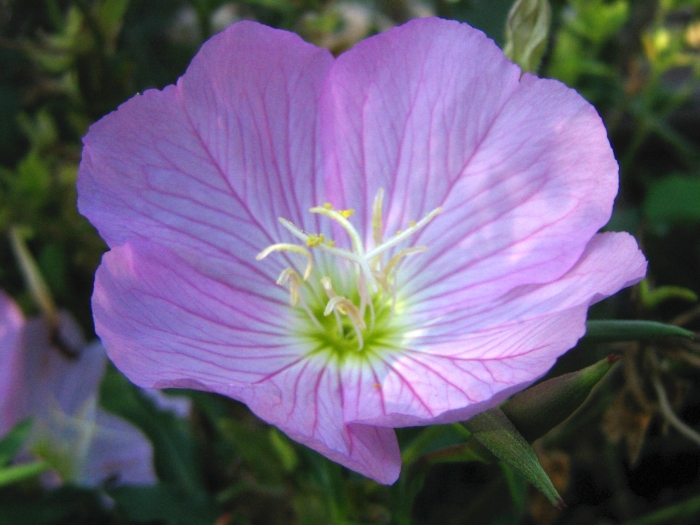Pinkladies
(Oenothera speciosa)
Pinkladies (Oenothera speciosa)
/
/

Roula30
CC BY-SA 3.0











































































Estimated Native Range
Summary
Pinkladies are valued for their extended blooming period and the sweet fragrance of their flowers, which add charm to gardens and attract pollinators. They are commonly used as ground cover and in border plantings due to their sprawling habit. In cultivation, they require loose, well-draining soil and full sun exposure. They are drought-resistant and can thrive in USDA hardiness zones 4 to 9. While Pinkladies are generally easy to maintain, they may not survive severe winters in colder climates. Additionally, gardeners should be aware that Oenothera speciosa can become invasive outside its native range, so it is important to check local regulations before planting.CC BY-SA 4.0
Plant Description
- Plant Type: Herb
- Height: 1-2 feet
- Width: 1-1.5 feet
- Growth Rate: Moderate
- Flower Color: Pink, White
- Flowering Season: Spring, Summer
- Leaf Retention: Deciduous
Growth Requirements
- Sun: Full Sun
- Water: Low, Medium
- Drainage: Medium, Fast
Common Uses
Bank Stabilization, Bee Garden, Bird Garden, Border Plant, Butterfly Garden, Deer Resistant, Drought Tolerant, Edible*Disclaimer: Easyscape's listed plant edibility is for informational use. Always verify the safety and proper identification of any plant before consumption., Erosion Control, Fragrant, Groundcover, Hummingbird Garden, Rabbit Resistant, Rock Garden, Salt Tolerant, Showy Flowers
Natural Habitat
native to grasslands and prairies in Mexico and the Southern United States
Other Names
Common Names: Pink Evening Primrose, Showy Evening Primrose, Mexican Primrose, Amapola, Buttercups, Silvernattljus, Pink-Ladies
Scientific Names: , Oenothera speciosa, Oenothera speciosa var. speciosa, Hartmannia speciosa, Oenothera speciosa var. childsii, Oenothera delessertiana, Oenothera webbiana, Xylopleurum hirsutum, Oenothera tetraptera var. childsii, Xylopleurum drummondii
GBIF Accepted Name: Oenothera speciosa Nutt.